- Home
- About Us
- Contact Us
- Site Map
- Affiliate Disclosure
- Privacy Policy
- Terms And Conditions
- Best Drone For Beginners 2021 : Top Beginner Drones
- Best Drones 2022 For Beginners : Top Beginner Drone
- Best Drones For Under 100 Dollars That Are Top Easy To Fly
- Best Cheap Drone For Photography : Camera Drones Budget
- What Is The Best Drone For 2022 And How Fast They Go
- Best Drone In The World To Use For Your First Time
- Best Drones 2022 With Camera : Which One Is The Best Drone
- Best Video Drones For Beginners | Features A Beginner Drone
- Dgi Drone
- Best Drone For Night Photography
- Best Drone For The Money
- Best Drone For Teenager
- Best Drone For Under 200
- Best Drone For Under 500
- Best Drone For Video
- Best Drone In The Market
- Best Drone Under 1000
- Best Drones For Travel
- Bird Drone
- Black Hornet Drone
- Deerc Drone
- DJI Drones For Sale
- Dji Fpv Drone
- Dji Mavic 3 Drone
- Drone Dj
Potensic ATOM 3-Axis Gimbal 4K GPS Drone, Under 249g, 96 Mins Flight, Max 6KM Transmission
Fpv Drone Kit : The Best Way To Enjoy Your Flight
An FPV (First-Person View) drone kit typically includes all the necessary components to build a fully functional drone for immersive and real-time flight experiences. These kits are popular among drone enthusiasts, hobbyists, and even professional drone racers. Let's explore the components typically found :
1. Frame: The kit usually includes a drone frame, which serves as the structural foundation. It can be made of carbon fiber, aluminum, or other lightweight materials to ensure durability and agility.
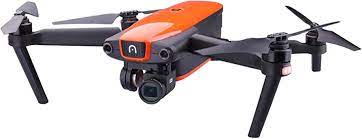
2. Flight Controller: The flight controller is the brain of the drone, responsible for interpreting commands from the pilot and stabilizing the drone during flight. It includes gyroscopes, accelerometers, and other sensors to maintain stability.
3. Motors and ESCs: The kit will include brushless motors, usually four of them, and Electronic Speed Controllers (ESCs). The motors provide the propulsion, while the ESCs regulate the motor speed based on commands from the flight controller.
4. Propellers: A set of propellers is included to attach to the motors. These are usually matched to the motor specifications and come in various sizes and configurations, depending on the drone's design and purpose.
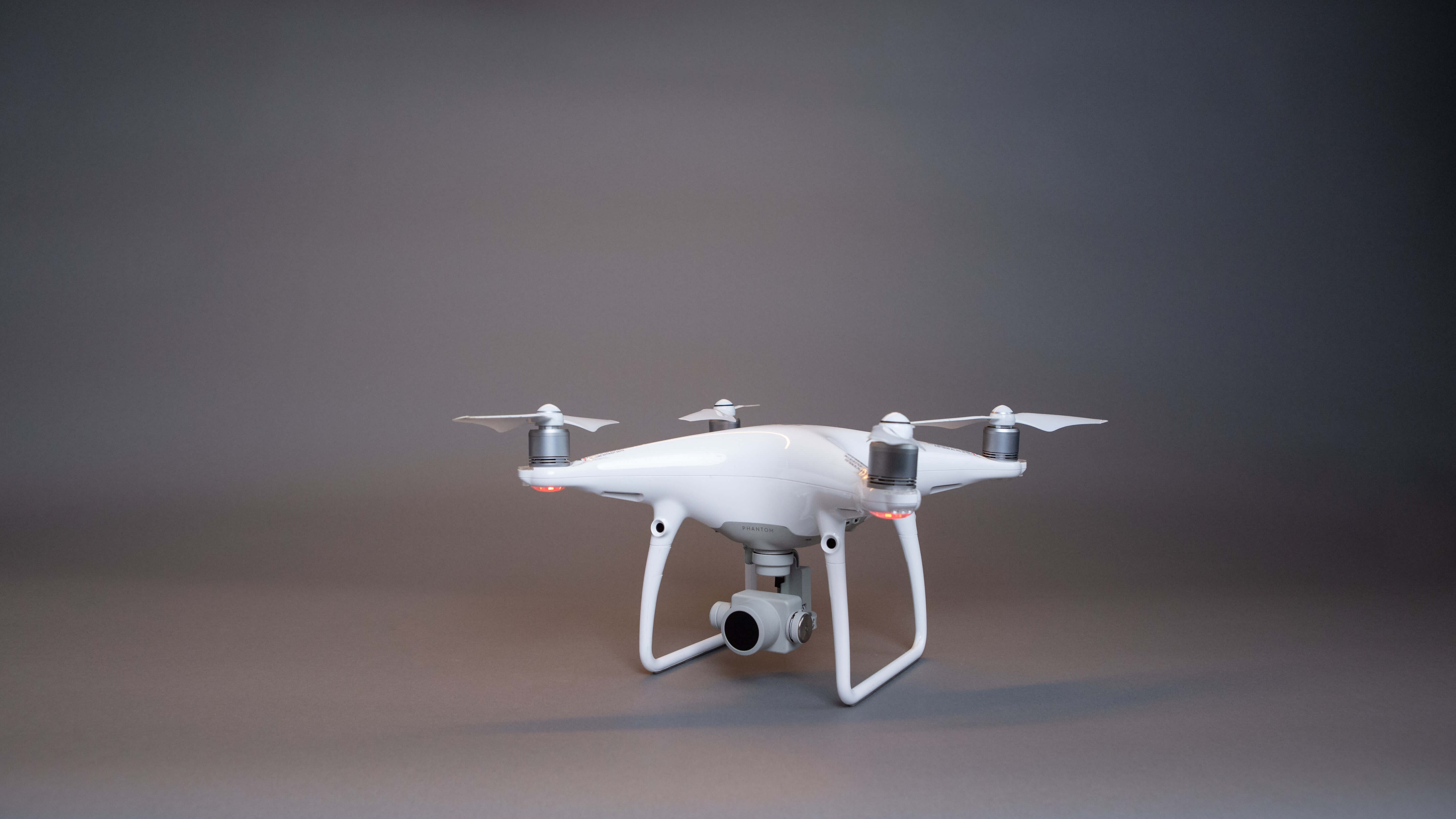
5. FPV Camera: The FPV camera is a small, lightweight camera mounted on the front of the drone. It provides a real-time video feed to the pilot's goggles or monitor, allowing for a first-person perspective during flight.
6. Video Transmitter (VTX): The VTX is responsible for transmitting the video feed from the FPV camera to the pilot's goggles or ground station. It broadcasts on specific frequencies or channels, complying with local regulations and allowing multiple pilots to fly simultaneously without interference.

7. Antenna: An antenna is used to receive the video signal from the VTX and transmit it to the pilot's goggles or ground station. Antennas come in various types, such as linear polarized or circular polarized, and different designs for optimal reception.
8. Receiver: The kit will include a receiver compatible with the chosen remote control system. The receiver connects to the flight controller and receives the pilot's commands, enabling wireless control of the drone.

9. Power Distribution Board (PDB): The PDB distributes power from the battery to all the components of the drone, ensuring they receive the required voltage and current for proper operation. It often includes voltage regulators to supply power to the flight controller and other electronics.
10. Battery and Charger: typically include a high-performance LiPo (Lithium Polymer) battery and a compatible charger. The battery provides the necessary power to the drone for flight, and the charger allows for recharging between flights.
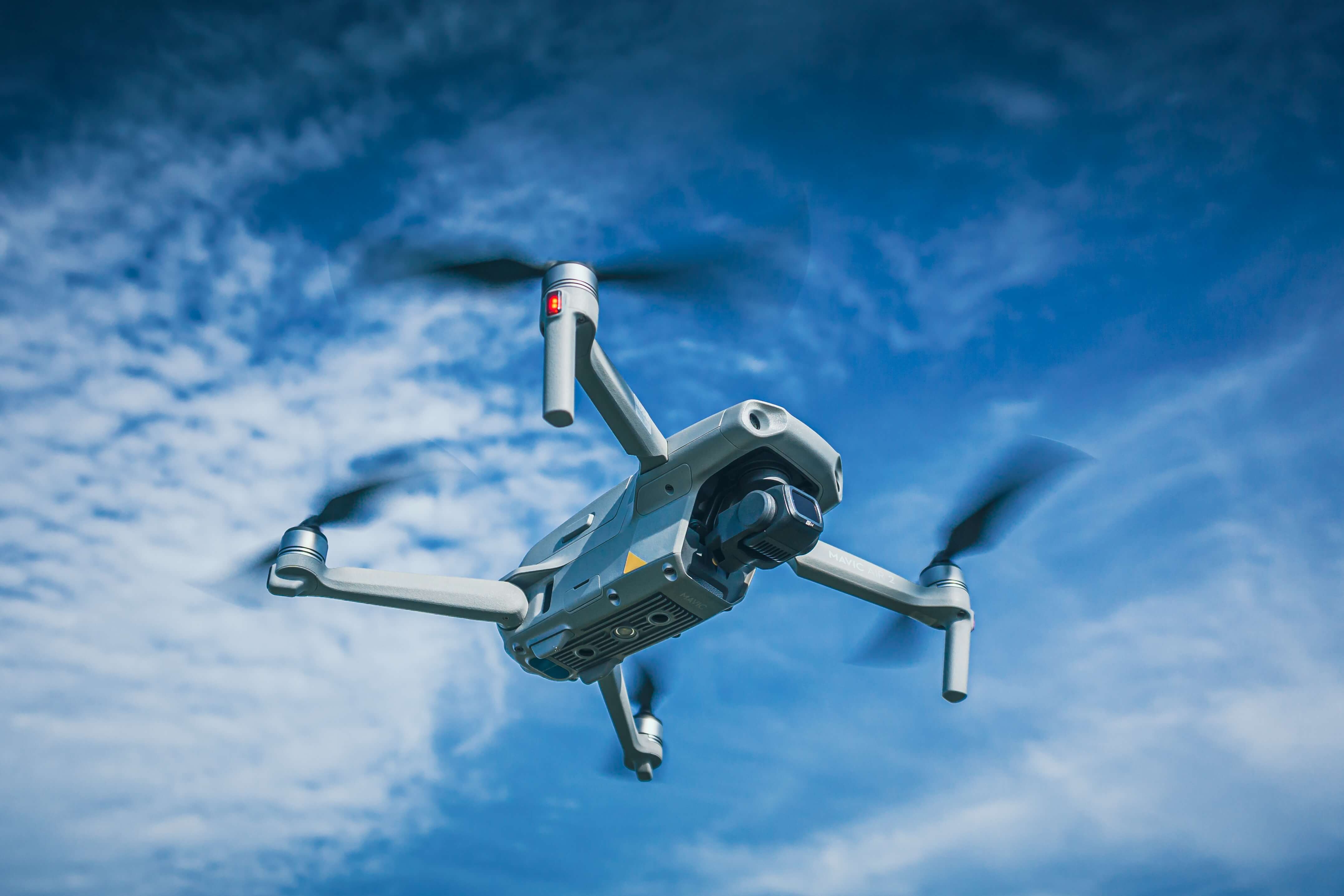
11. Radio Transmitter and Receiver:
Some may include a radio transmitter and receiver as part of the package. These enable the pilot to control the drone wirelessly using a handheld remote controller.
12. Optional Extras: Depending on the kit, additional components may be included or required, such as an on-screen display (OSD) module for displaying flight information, a GPS module for position hold and navigation, or additional accessories like LED lights for visual effects during flight.

It's important to note that may vary in terms of included components, quality, and customization options. Some kits may offer a more modular approach, allowing you to select specific components based on your preferences and requirements. Always refer to the manufacturer's instructions and guidelines for assembly, setup, and safety considerations.
What Should My First FPV Drone Be ?
Choosing your first FPV drone depends on your experience level, budget, and specific interests. Here's a detailed breakdown of the factors to consider when selecting your first FPV drone:

1. Skill Level: If you're new to drones and FPV flying, it's recommended to start with a ready-to-fly (RTF) or a bind-and-fly (BNF) drone. These options come pre-assembled or partially assembled, so you can focus on learning to fly without the complexities of building a drone from scratch.
2. Budget: Determine your budget range for the drone, considering not only the initial cost but also additional expenses like batteries, goggles, transmitter, and spare parts. Entry-level FPV drones can range from $100 to $300, while higher-end models can cost upwards of $500 or more.

3. Flight Time: Consider the flight time you desire. Entry-level FPV drones typically have shorter flight times ranging from 3 to 10 minutes. If longer flight times are important to you, you may need to invest in additional batteries or opt for higher-end models.
4. Durability: As a beginner, crashes are inevitable. Look for drones with durable frames, preferably made of carbon fiber or similar materials that can withstand impacts and crashes.

5. Flight Modes: Some FPV drones come with different flight modes, including stabilization or altitude hold modes. These modes can assist beginners in controlling the drone and gaining confidence before transitioning to acro or manual mode, which offers full control but requires more skill.
6. Controller Compatibility: Check if the drone you're considering is compatible with popular radio transmitters. This allows you to use a high-quality controller that you can also use with future drone builds.
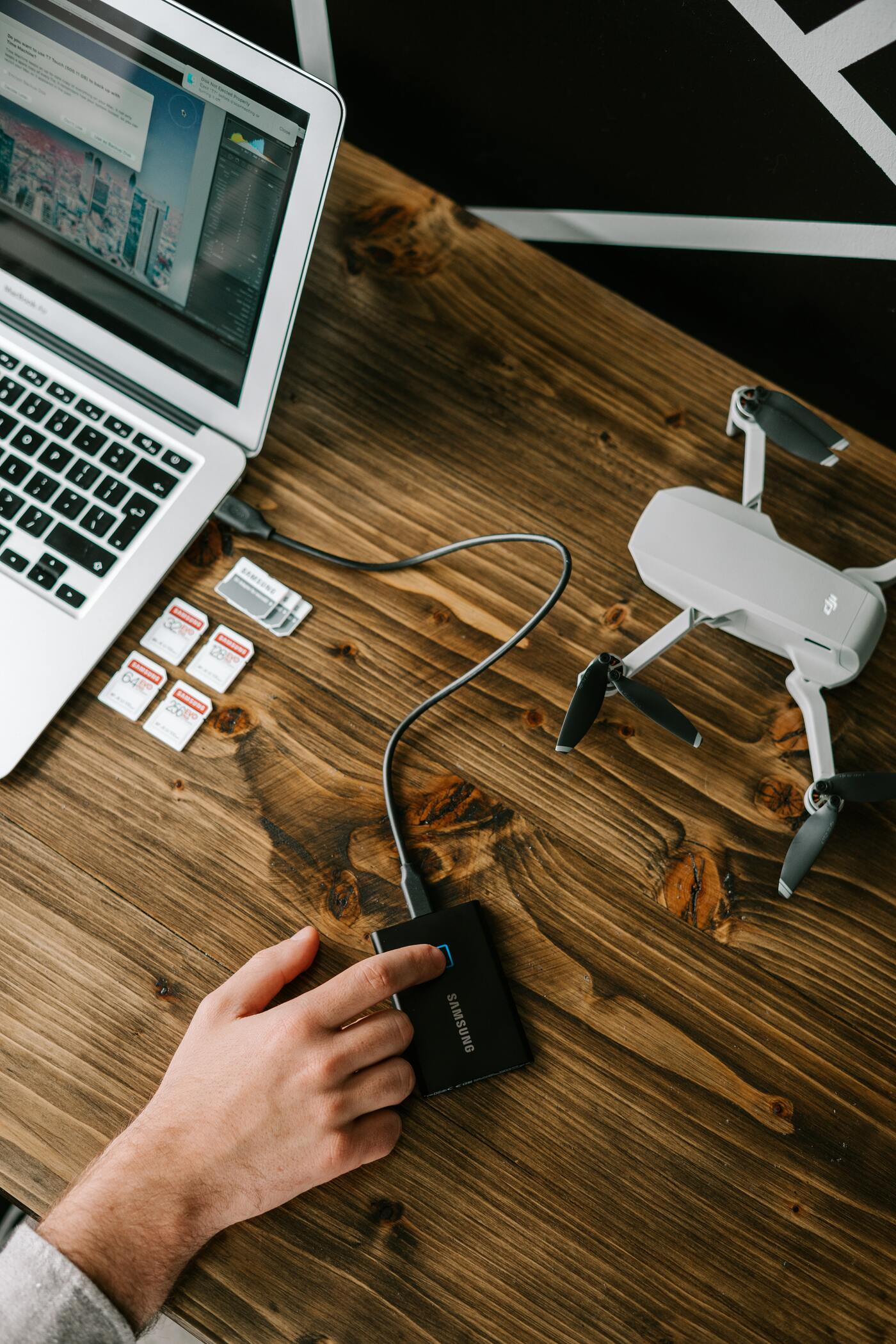
7. Simulators and Training: Look for drones that offer compatibility with simulators. Simulator software allows you to practice flying in a virtual environment before taking your drone to the skies. This can help you develop essential piloting skills and minimize crashes.
8. Community and Support: Consider choosing a drone that has an active and supportive community. This can provide access to online forums, tutorials, and resources where you can seek advice, troubleshoot issues, and learn from experienced FPV pilots.

9. Upgradability: While starting with a ready-to-fly drone is recommended for beginners, it's worth considering a drone that allows for future upgrades. This will enable you to enhance your drone's performance and customize it as you gain experience and specific needs.
10. Availability of Spare Parts: Check if spare parts and replacement components are readily available for the drone you're interested in. Having easy access to spare parts can reduce downtime and repair costs in case of accidents or component failures.

Popular options for beginner FPV drones include the Tinyhawk series by EMAX, BetaFPV FPV Whoop drones, and the Eachine Wizard X220. These models offer a good balance between affordability, durability, and ease of use.
Remember to familiarize yourself with local regulations and fly responsibly in designated areas, adhering to safety guidelines provided by drone associations and authorities. Practice flying in open spaces away from people and obstacles until you feel confident in your piloting skills.
Are FPV Drones Better Than DJI ?
Comparing FPV drones to DJI drones requires considering different factors and understanding the specific use cases and preferences of the user. Here's a detailed breakdown of the advantages and considerations for both FPV drones and DJI drones:
FPV Drones:

1. Agility and Speed: FPV drones are designed for fast-paced and acrobatic flight. They offer higher speeds, quick maneuverability, and the ability to perform impressive aerial tricks and stunts. FPV drones are popular among drone racing enthusiasts and pilots who enjoy the thrill of immersive flight experiences.
2. First-Person View: FPV drones provide a first-person view through the use of FPV goggles or monitors. This real-time video feed allows pilots to see exactly what the drone sees, providing an immersive and thrilling flight experience. FPV flying is often compared to being "inside" the drone, offering a unique perspective.

3. Customization and DIY: FPV drones offer a high level of customization. Enthusiasts can build their drones from scratch, selecting specific components to suit their needs and preferences. This level of customization allows for greater flexibility in terms of performance, camera options, and overall drone design.
4. Freestyle and Racing: FPV drones excel in freestyle flying and racing competitions. The agility and responsiveness of FPV drones make them ideal for navigating complex obstacle courses and performing aerobatic maneuvers. FPV racing has a dedicated community and offers exciting events and competitions worldwide.

DJI Drones:
1. Ease of Use: DJI drones are known for their user-friendly design and intuitive controls. They are designed to be accessible to beginners and professionals alike. DJI drones often feature advanced flight modes, automated flight functions, and intelligent obstacle avoidance systems, making them easy to fly and capture stunning aerial footage.
2. Camera Quality: DJI drones are renowned for their high-quality cameras and advanced imaging capabilities. They offer options for 4K and even higher-resolution video recording, as well as high-resolution photography. DJI's camera stabilization systems, such as the popular 3-axis gimbal technology, provide smooth and professional-looking footage.

3. Safety Features: DJI drones prioritize safety with features like GPS positioning, obstacle avoidance, and return-to-home functions. These features enhance the overall flight experience by providing stability, collision avoidance, and peace of mind. Safety features are particularly beneficial for aerial photography and videography.
4. Integrated Systems: DJI offers an ecosystem of integrated systems and software, including flight controllers, apps, and post-processing tools. These components work together seamlessly, providing a cohesive and user-friendly experience. DJI drones often come with dedicated apps for flight planning, live streaming, and editing.

5. Commercial Applications: DJI drones are widely used in professional and commercial applications, including aerial photography, cinematography, surveying, mapping, inspection, and search and rescue operations. Their advanced imaging capabilities and stability make them suitable for a wide range of industries.
In summary, FPV drones and DJI drones cater to different preferences and use cases. FPV drones excel in agility, speed, and immersive flight experiences, appealing to drone racing enthusiasts and those seeking adrenaline-fueled flying. On the other hand, DJI drones prioritize ease of use, camera quality, and integrated systems, making them popular among aerial photographers, videographers, and professionals who value convenience and high-quality footage.
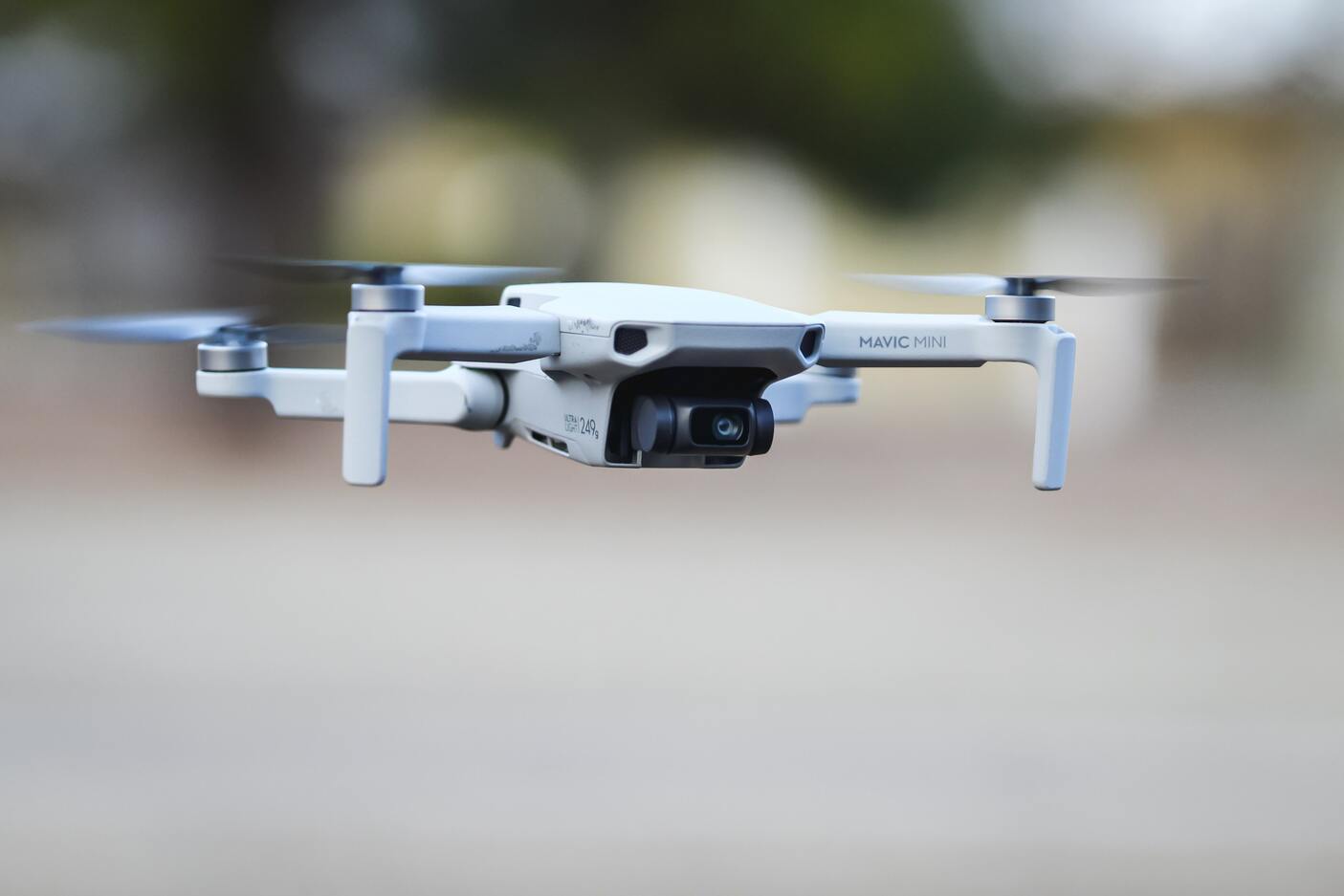
How Much Does A Decent FPV Drone Cost ?
The cost of a decent FPV drone can vary depending on various factors such as the type of drone, its features, build quality, and brand. Here's a breakdown of the typical price ranges for different types of FPV drones:
1. Ready-to-Fly (RTF) FPV Drones: These are fully assembled and ready to fly out of the box. They usually come with a controller, goggles, and a basic set of components. Entry-level RTF FPV drones can range from $100 to $300. These drones are suitable for beginners who want to start flying FPV without the hassle of building or configuring a drone.

2. Bind-and-Fly (BNF) FPV Drones: BNF drones come partially assembled and require you to bind them with a compatible controller. These drones typically don't include goggles or a controller. BNF FPV drones range from $100 to $400. This option allows you to use your preferred controller or goggles and provides more flexibility in terms of customization.
3. Build-it-Yourself FPV Drones: Building your own FPV drone gives you the highest level of customization and performance. The cost can vary greatly depending on the components you choose. A basic DIY FPV drone build can start at around $200 to $300. However, as you opt for higher-quality components, more advanced flight controllers, premium motors, and high-definition cameras, the cost can increase significantly. Advanced DIY builds can range from $400 to $800 or more.

4. High-End FPV Drones: High-end FPV drones are typically designed for professional or competitive use. These drones come with advanced features, top-of-the-line components, and premium build quality. Prices for high-end FPV drones can start around $800 and go well into the thousands of dollars.
It's worth noting that the prices mentioned above are approximate and can vary depending on the brand, availability of components, and any additional accessories or upgrades you choose. It's recommended to research specific models, read reviews, and compare prices to find the best option within your budget. Additionally, keep in mind that the cost of batteries, chargers, goggles, and other accessories should be factored into your budget, as they are essential for a complete FPV flying experience.
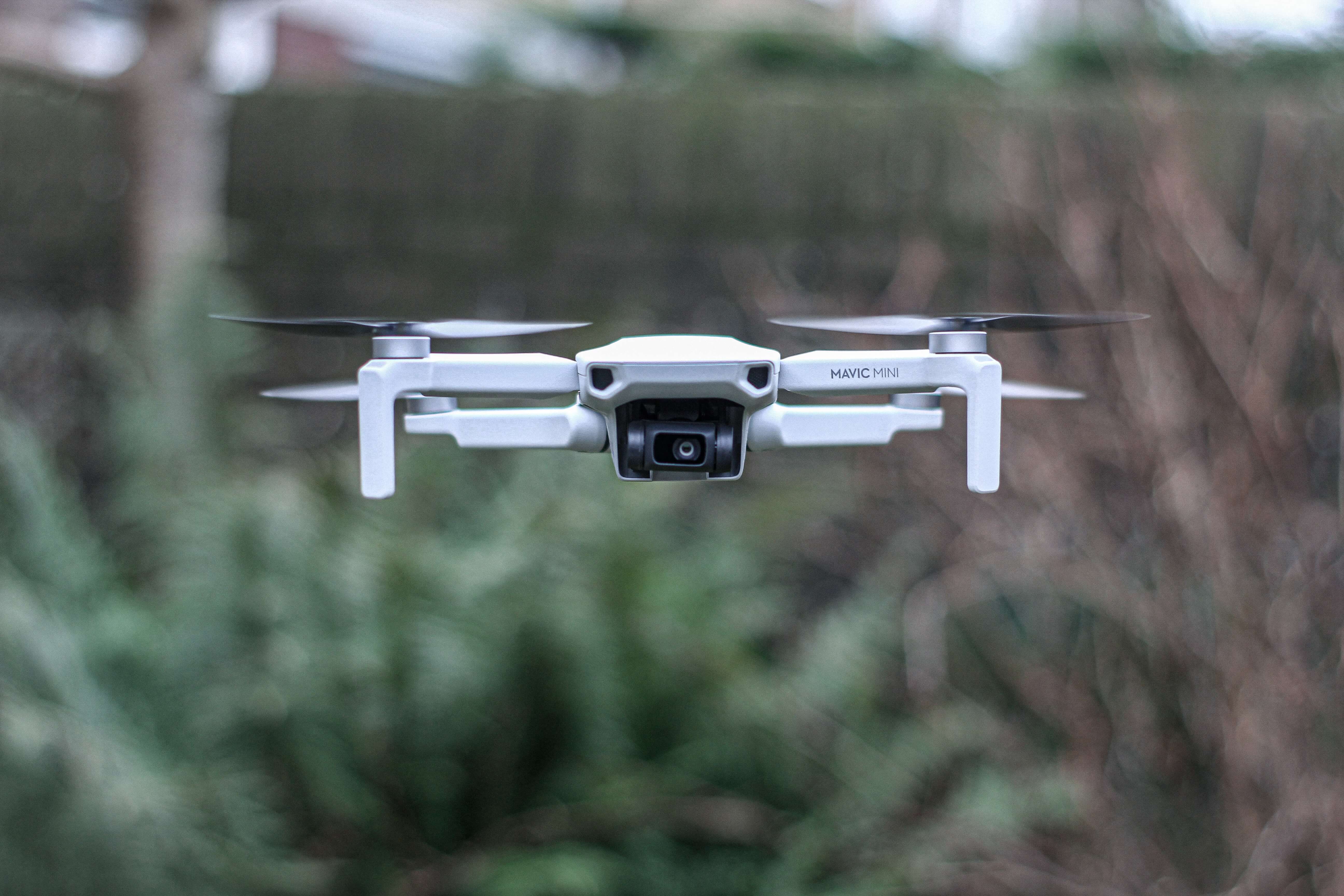
How Much Does A Cost ?
The cost of an FPV drone kit can vary depending on the components included, quality, and customization options. Typically provide all the necessary components to build a functional drone, excluding optional accessories such as batteries, goggles, and transmitters. Here's a breakdown of the approximate price ranges for:
1. Entry-Level : Entry-level kits are designed for beginners and those on a tighter budget. These kits usually include basic components and may have limited customization options. The price range for entry-level is typically between $150 and $300.
2. Mid-Range : Mid-range kits offer better quality components, improved performance, and increased customization options. These kits are suitable for those with some experience or who want to invest in a more capable drone. The price range for mid-range FPV drone kits is usually between $300 and $600.
3. High-End: High-end kits are geared towards professionals, experienced pilots, or those seeking top-of-the-line performance. These kits often include premium components, advanced flight controllers, and high-resolution cameras. The price range for high-end FPV drone kits can start around $600 and go well above $1,000, depending on the features and components included.
It's important to note that the prices mentioned above are approximate and can vary depending on the brand, included components, and any optional extras. Additionally, keep in mind that the cost of additional accessories, such as batteries, goggles, transmitters, and tools, should be factored into your budget. These accessories are typically not included and are essential for a complete FPV flying setup.
It's recommended to research different kit options, read reviews, and compare prices to find the best option that suits your budget, skill level, and specific requirements.
Do You Need An FAA License To Fly A FPV Drone ?
As of my knowledge cutoff in September 2021, the rules and regulations regarding the need for an FAA license to fly an FPV drone in the United States are as follows:
1. Recreational Use: If you are flying your FPV drone recreationally, you do not need an FAA license as long as you adhere to the FAA's guidelines under the Special Rule for Model Aircraft. The guidelines state that you must fly your drone for hobby or recreational purposes only, maintain visual line of sight with the aircraft, and fly in accordance with community-based safety guidelines.
2. Part 107 Remote Pilot Certificate: If you are flying your FPV drone for commercial purposes or any activity that is not purely recreational, you will need to obtain a Part 107 Remote Pilot Certificate from the FAA. This requires passing a knowledge test and meeting certain eligibility criteria. The Part 107 certification allows you to fly drones for commercial purposes, including photography, videography, inspection, and other paid services.
3. Exception for FPV Goggles: In the past, there was an interpretation that using FPV goggles or immersive goggles while flying a drone violated the requirement to maintain visual line of sight. However, the FAA has issued guidance that FPV goggles can be used as long as there is a spotter who maintains visual contact with the drone at all times.
It's important to note that regulations and requirements can change over time, and it's crucial to stay updated with the latest guidelines from the FAA or relevant aviation authority in your country. Additionally, local regulations and restrictions may apply in specific areas or flight zones, so it's essential to research and comply with any additional rules set by local authorities or landowners.
To ensure compliance with regulations, it is always recommended to review the official FAA guidelines and consult with the FAA or a qualified aviation authority for the most up-to-date information regarding licensing requirements for FPV drone operations.
Is Flying FPV Hard ?
Flying FPV can be challenging, especially for beginners who are new to the hobby. It requires a combination of piloting skills, hand-eye coordination, and a solid understanding of the equipment and flight dynamics. Here are some factors that contribute to the perceived difficulty of flying FPV:
1. Limited Field of View: When flying FPV, you rely solely on the video feed from the drone's camera. This limited field of view can be disorienting at first, as you don't have peripheral vision like you do when flying line-of-sight. It takes time and practice to get accustomed to interpreting the video feed and navigating effectively.
2. Speed and Agility: FPV drones are designed to be fast and agile, allowing for quick maneuvers and acrobatic flying. This can be challenging for beginners who are not used to controlling a drone with such responsiveness. Learning to handle the throttle, pitch, roll, and yaw inputs simultaneously requires practice and coordination.
3. Depth Perception: Estimating distances and perceiving depth can be difficult when flying FPV. Without the same depth cues as when flying line-of-sight, judging distances and avoiding obstacles becomes a skill that needs to be developed over time.
4. Learning Curve: There is a learning curve associated with FPV flying, especially if you're new to flying drones in general. Understanding flight modes, tuning the drone's settings, and troubleshooting technical issues can require some technical knowledge and experience.
5. Risk of Crashes: FPV flying involves more inherent risks compared to flying line-of-sight. The limited field of view and the immersive experience can lead to misjudgments, resulting in crashes or collisions. Beginners should expect a few crashes along the learning journey, which can be frustrating and potentially costly if components need to be replaced.
Despite these challenges, many enthusiasts find FPV flying immensely rewarding. With practice and dedication, the difficulties can be overcome, and pilots can develop their skills to enjoy the exhilarating experience of flying FPV.
To make learning FPV easier, it's recommended to start with a simulator that allows you to practice flying in a virtual environment before taking to the skies with an actual drone.
Simulators help develop muscle memory and hand-eye coordination while minimizing the risk of crashes. Additionally, seeking guidance from experienced pilots, joining local FPV communities, and participating in group activities or races can provide valuable support and learning opportunities.
What Is The Best FPV Drone Size ?
The best FPV drone size depends on your specific needs, preferences, and the type of flying you intend to do. FPV drones come in various sizes, each offering its own advantages and considerations. Here's a breakdown of different FPV drone sizes and their characteristics:
1. Tiny Whoop/Indoor Drones: Tiny Whoop drones are typically ultra-small and lightweight, ranging from around 65mm to 85mm in size. These drones are ideal for indoor flying due to their small size, maneuverability, and ability to handle tight spaces. They are often equipped with ducted propellers for increased safety and can be flown in small indoor environments, such as living rooms or indoor race tracks.
2. Micro/Mini Drones: Micro and mini FPV drones are slightly larger than Tiny Whoops and are designed for both indoor and outdoor flying. They range from around 100mm to 150mm in size and offer a good balance between portability, flight performance, and durability. Micro and mini drones are popular for backyard flying, park cruising, and freestyle flying.
3. 3-inch and 4-inch Drones: These drones are often referred to as "toothpick" or "cinewhoop" drones. They typically have a wheelbase of 120mm to 160mm and can accommodate larger propellers. 3-inch and 4-inch drones offer a good balance between agility, flight time, and payload capacity. They are suitable for both freestyle flying and capturing cinematic footage.
4. 5-inch Drones: 5-inch FPV drones are the most popular size for FPV racing and freestyle flying. They have a wheelbase of approximately 210mm and are capable of carrying larger batteries and payloads. 5-inch drones are known for their speed, agility, and ability to handle windy conditions. They are often used in drone racing competitions due to their balance of performance and durability.
5. Larger Drones: Beyond the 5-inch size, there are larger FPV drones, such as 6-inch, 7-inch, or even 8-inch and above. These larger drones are typically designed for long-range flights, aerial photography, or specific applications requiring higher payload capacity or longer flight times. They offer increased stability and efficiency for extended flights but may be less maneuverable compared to smaller sizes.
It's important to consider your skill level, flying environment, intended use, and personal preferences when choosing the best FPV drone size for you. Smaller drones are generally more maneuverable and suitable for tighter spaces, while larger drones offer more stability and endurance for longer flights or carrying additional equipment. Ultimately, the best size for you will depend on your specific needs and the type of flying experience you desire.
Should I Get An FPV Drone Or Regular Drone ?
Whether to choose an FPV drone or a regular drone (also known as a camera drone or consumer drone) depends on your specific interests, preferences, and desired applications. Here's a detailed breakdown to help you make a decision:
FPV Drones:
1. Immersive Flight Experience: FPV drones offer a first-person view, allowing you to experience flight as if you were inside the drone. This immersive experience is popular among drone racing enthusiasts and those seeking an adrenaline-fueled flying experience.
2. Agility and Acrobatics: FPV drones are designed for speed, agility, and acrobatic maneuvers. They are highly maneuverable and capable of performing impressive tricks, flips, and rolls. FPV drones excel in freestyle flying and racing, providing an exciting and dynamic flight experience.
3. DIY and Customization: FPV drones offer a high level of customization. Enthusiasts can build their drones from scratch or modify existing models, selecting specific components to suit their preferences and performance requirements. This allows for personalization and flexibility in terms of flight characteristics and camera options.
4. Racing and Competitions: FPV drones are popular in the world of drone racing. Racing events and competitions provide a competitive and social aspect to FPV flying. If you are interested in participating in organized races and competing against other pilots, FPV drones are a suitable choice.
Regular Drones:
1. Aerial Photography and Videography: Regular drones, equipped with high-quality cameras and stabilization systems, are ideal for capturing aerial photographs and videos. They offer advanced camera features, such as 4K or even higher-resolution video recording, and options for aerial photography techniques like panorama or follow-me modes.
2. Ease of Use and Stability: Regular drones often feature advanced flight modes, GPS positioning, and stability systems that make them easy to fly, even for beginners. These drones have automated flight functions, obstacle avoidance systems, and precise hovering capabilities, ensuring stable and smooth aerial shots.
3. Commercial Applications: Regular drones are widely used in various industries for commercial applications. They are employed in aerial photography, cinematography, surveying, mapping, inspection, agriculture, search and rescue operations, and more. The stability, high-quality imaging capabilities, and advanced features make regular drones suitable for professional applications.
4. Extended Flight Time: Regular drones typically offer longer flight times compared to FPV drones. This extended flight time allows for more extended aerial exploration, increased coverage for aerial photography, and longer recording sessions.
Ultimately, the choice between an FPV drone and a regular drone depends on your priorities, desired applications, and the kind of flying experience you seek. If you are looking for an immersive and acrobatic flight experience, enjoy building and customizing your equipment, and are interested in racing or freestyle flying, an FPV drone may be the better choice.
On the other hand, if you prioritize aerial photography, videography, ease of use, and commercial applications, a regular drone with advanced camera features and stability systems would be more suitable.
What Is The Most Common FPV Drone Size ?
The most common FPV drone size, especially for freestyle flying and drone racing, is the 5-inch drone. The term "5-inch" refers to the diagonal measurement of the propellers on the drone. Here's a detailed explanation of why the 5-inch FPV drone is the most popular size:
1. Performance and Agility: 5-inch FPV drones strike a balance between speed, agility, and maneuverability. They are known for their quick response and ability to perform acrobatic maneuvers, making them ideal for freestyle flying and drone racing.
2. Racing Standard: The 5-inch FPV drone has become the de facto standard for racing competitions, such as the Drone Racing League (DRL) and other major racing events. This standardization ensures consistency in performance, allowing pilots to compete on a level playing field.
3. Availability and Component Support: The popularity of the 5-inch FPV drone has led to a wide range of components specifically designed for this size. There is a vast selection of 5-inch frames, motors, propellers, and other components available in the market, making it easier to build, repair, and upgrade your drone.
4. Durability: 5-inch drones are known for their durability. They can withstand crashes and impacts reasonably well, thanks to the larger size and stronger frame construction. This durability is especially important in drone racing, where collisions and crashes are common.
5. Versatility: While 5-inch drones are often associated with racing, they are also versatile enough to handle other types of flying. They can be used for freestyle flying, exploring new locations, and capturing cinematic footage. The 5-inch size strikes a good balance between stability and maneuverability, allowing for a wide range of flight styles and applications.
6. Community and Resources: The 5-inch FPV drone community is extensive, with a wealth of online resources, forums, and tutorials available. This community support makes it easier for beginners to find guidance, troubleshoot issues, and learn from experienced pilots.
Due to its widespread adoption and the availability of compatible components, the 5-inch FPV drone has become the go-to choice for many FPV enthusiasts and professional pilots. However, it's important to note that there are other FPV drone sizes available, each with its own advantages and applications. The choice of size ultimately depends on your specific preferences, flying style, and intended use.
What Is The Max Distance For FPV Drone ?
The maximum distance for an FPV drone depends on various factors, including the equipment used, transmission technology, regulations, and line-of-sight requirements. Here's a breakdown of the factors that influence the maximum distance for FPV drone flights:
1. Transmission Range: The transmission range is determined by the video transmitter (VTX) and receiver (VRX) used in the FPV system. Different VTX and VRX setups have varying power outputs and frequency bands, which can affect the range. Generally, FPV systems can provide reliable video transmission within a range of 500 meters to several kilometers, depending on the equipment and environmental conditions.
2. Antenna Selection and Quality: The antennas used in the FPV system play a crucial role in signal range and quality. Using high-quality antennas, such as directional or high-gain antennas, can extend the range by improving signal reception and reducing signal interference.
3. Line-of-Sight (LOS) Requirement: In most countries, flying FPV drones legally requires maintaining visual line-of-sight with the aircraft. This means that you should be able to see the drone with your naked eye at all times during the flight. The range of your FPV system should be within the range of your visual line-of-sight to comply with regulations.
4. Environmental Factors: Environmental conditions, such as obstacles, interference sources, and radio frequency (RF) noise, can affect the range of the FPV system. Flying in urban areas with tall buildings, densely populated areas with Wi-Fi signals, or areas with strong RF interference can limit the effective range of the FPV system.
5. Battery Life and Flight Time: The flight time of your FPV drone is directly linked to the distance it can cover. Longer flight times allow for more extended flights and potentially covering greater distances. It's important to choose a drone with a battery that provides sufficient flight time for your intended range.
6. Regulatory Restrictions: Local regulations may impose specific limitations on the maximum flight range for drones, including FPV drones. It's essential to be aware of and comply with the regulations set by aviation authorities in your region.
It's important to note that pushing the limits of your FPV system's range can increase the risk of losing video transmission, control signal, or losing sight of the drone, which can result in a flyaway or accident. Always prioritize safety, adhere to regulations, and consider factors like signal quality, battery life, and environmental conditions when planning your FPV flights.
How Long Do FPV Drones Last ?
The lifespan of an FPV drone can vary depending on several factors, including the quality of components, flight conditions, maintenance, and frequency of use. Here's a breakdown of the factors that can impact the lifespan of an FPV drone:
1. Build Quality: The build quality of the drone and its components plays a significant role in determining its lifespan. Drones constructed with durable materials, such as carbon fiber frames, tend to be more robust and withstand crashes and impacts better than those made with cheaper or less durable materials.
2. Flight Time: The flight time of an FPV drone refers to the duration it can fly on a single battery charge. Flight time varies depending on the drone's design, battery capacity, and flying style. The more flights you perform, the more wear and tear the drone components experience, potentially shortening its lifespan.
3. Flight Conditions: Flying in harsh or challenging conditions, such as extreme temperatures, high winds, or dusty environments, can put additional strain on the drone's components and potentially reduce their lifespan. Regularly subjecting the drone to such conditions without proper maintenance and care can accelerate wear and tear.
4. Maintenance and Care: Proper maintenance and care can significantly extend the lifespan of an FPV drone. This includes regular cleaning, checking for loose connections, inspecting and replacing damaged propellers, and ensuring proper storage and transportation to prevent physical damage.
5. Crashes and Repairs: Crashes are common in FPV flying, especially when learning or pushing the limits of your skills. The severity of crashes can vary, and repairing or replacing damaged components becomes necessary. Frequent crashes can shorten the lifespan of a drone if repairs are not done properly or if components are repeatedly damaged.
- 6. Component Upgrades: Upgrading components, such as motors, flight controllers, and cameras, can enhance the performance and extend the lifespan of the drone. By replacing older or less efficient components with newer and better ones, you can ensure the drone remains up-to-date and capable of meeting your needs for a longer period.
7. Technological Advancement: The rapid pace of technological advancements in the drone industry may result in older drones becoming outdated in terms of features and capabilities. While the physical lifespan of a drone may be intact, it may be considered obsolete or less desirable due to newer models offering improved performance, features, and camera quality.
It's important to note that there is no fixed or predetermined lifespan for an FPV drone. With proper care, maintenance, and responsible flying, an FPV drone can last for several years. However, it's also important to be prepared for eventual wear and tear, component failures, and the need for repairs or replacements throughout the drone's lifetime.
How Far Can I Fly My FPV Drone ?
The maximum distance you can fly your FPV drone depends on several factors, including regulations, equipment capabilities, line-of-sight requirements, and signal strength. Here's a detailed breakdown of the factors that can influence the maximum flight distance for an FPV drone:
1. Regulatory Restrictions: In most countries, drone regulations require maintaining visual line-of-sight (VLOS) with the aircraft during flight. This means you should be able to see the drone with your naked eye at all times. Therefore, the maximum flight distance is generally limited to the range within which you can maintain a clear line of sight with the drone.
2. Transmission Range: The transmission range of your FPV system, including the video transmitter (VTX) and receiver (VRX), determines the maximum distance over which you can reliably receive video transmission. Different FPV systems have varying power outputs and frequency bands, which can impact the range. Typically, FPV systems can provide reliable video transmission within a range of several hundred meters to several kilometers, depending on the equipment and environmental conditions.
3. Antenna Selection and Quality: The quality and type of antennas used in your FPV system can significantly impact the range. Higher quality antennas, such as directional or high-gain antennas, can improve signal reception and extend the effective range of your FPV system.
4. Signal Interference: Environmental factors, such as buildings, trees, or other structures, can obstruct the radio frequency (RF) signal between the drone and the receiver. Additionally, strong RF interference from sources like Wi-Fi networks or other electronic devices can impact the signal strength and range of your FPV system.
Click here for more information Unmanned Aerial Vehicle